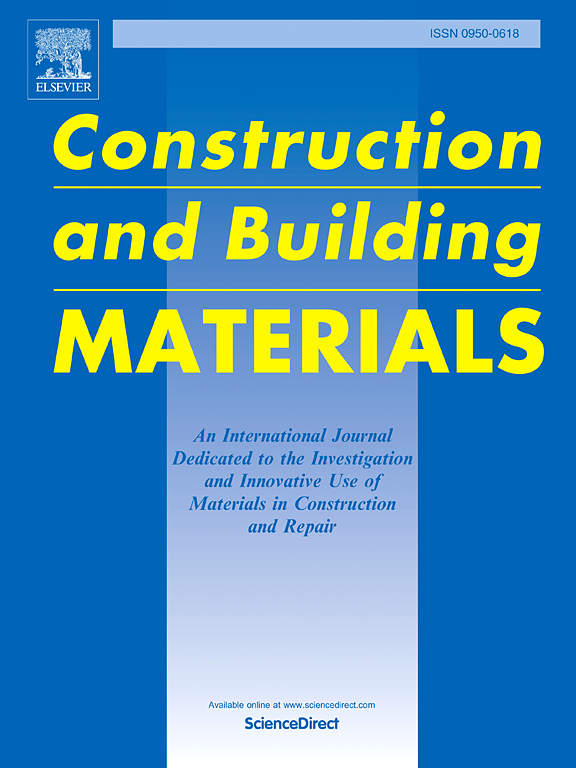Interfacial bonding performance of CFRP sheet reinforced corroded steel plates under fatigue loading
IF 7.4
1区 工程技术
Q1 CONSTRUCTION & BUILDING TECHNOLOGY
引用次数: 0
Abstract
Crucial research gaps remain in understanding the bonding performance of the CFRP-corroded steel interface under fatigue loading. This study investigated the interfacial bonding performance of Carbon Fiber Reinforced Polymer (CFRP)sheets and corroded steel plates under fatigue loading using double shear specimen tests. The analysis focused on the effects of multiple factors, including the steel plate corrosion rate and the ratio of the upper bound value (Pmax) and lower bound value (Pmin) of the fatigue loading to the debonding load (Pu). Specifically, Pmin/Pu ranged from 0.1 to 0.3, while Pmax/Pu ranged from 0.45 to 0.65. Notable findings include: (i) Under fatigue loading, the displacement at the tested end of the specimen increased progressively with more fatigue cycles,showing a nonlinear trend. This reflects cumulative interface degradation caused by adhesive plastic slip and micro-crack propagation, particularly at higher stress levels; (ii) The interfacial stiffness of CFRP sheet-corroded steel plate specimens weakened progressively during fatigue loading, particularly under high corrosion rates. A 15 % widening of the load-slip curve envelope at Pmax/Pu = 0.45 indicated reduced load transfer efficiency and increased energy dissipation capacity as interface degradation accumulated.; (iii) Fatigue life was highly sensitive to load limits, particularly under high corrosion rates (15 %). Increasing Pmax/Pu from 0.45 to 0.65 reduced fatigue life by 97 %, while increasing Pmin/Pu from 0.1 to 0.3 extended fatigue life by 17 times, highlighting the critical role of stress amplitude control in fatigue performance.; (iv) At the same corrosion rate, the interface exhibited a reduced fatigue life as stress levels increased, and specimens with different corrosion rates demonstrated a shorter fatigue life compared to uncorroded ones. A method for predicting the fatigue life of the CFRP-steel interface was proposed, taking into account the influence of corrosion rate and load level, with a prediction equation derived using Lagrange polynomial fitting for corrosion rates ranging from 0 % to 15 %,with a prediction error below 8 %. Rarely seen in previous studies, this method offers valuable insights for evaluating the durability of CFRP-reinforced structures and guiding the maintenance of aging infrastructure in corrosive environments.
求助全文
约1分钟内获得全文
求助全文
来源期刊

Construction and Building Materials
工程技术-材料科学:综合
CiteScore
13.80
自引率
21.60%
发文量
3632
审稿时长
82 days
期刊介绍:
Construction and Building Materials offers an international platform for sharing innovative and original research and development in the realm of construction and building materials, along with their practical applications in new projects and repair practices. The journal publishes a diverse array of pioneering research and application papers, detailing laboratory investigations and, to a limited extent, numerical analyses or reports on full-scale projects. Multi-part papers are discouraged.
Additionally, Construction and Building Materials features comprehensive case studies and insightful review articles that contribute to new insights in the field. Our focus is on papers related to construction materials, excluding those on structural engineering, geotechnics, and unbound highway layers. Covered materials and technologies encompass cement, concrete reinforcement, bricks and mortars, additives, corrosion technology, ceramics, timber, steel, polymers, glass fibers, recycled materials, bamboo, rammed earth, non-conventional building materials, bituminous materials, and applications in railway materials.
 求助内容:
求助内容: 应助结果提醒方式:
应助结果提醒方式:


